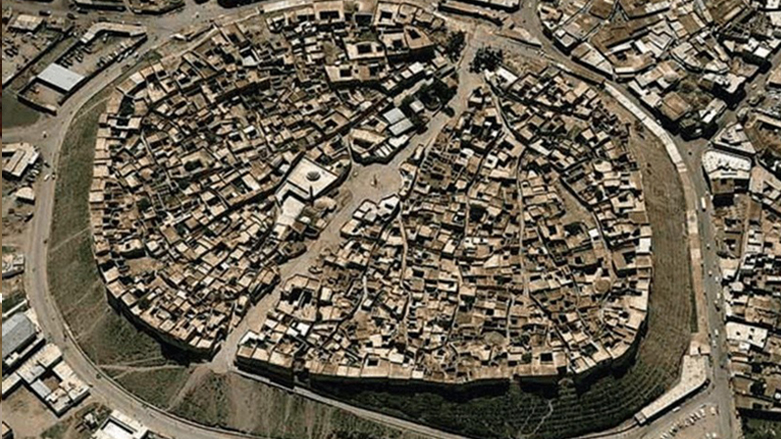Erbil Citadel, a symbol of human life

ERBIL (Kurdistan 24) - It is more than just a citadel. For the local people, it is a sign of revival, defense, strength, and continuity. For international agencies such as UNESCO, it has an outstanding universal value, a site of significance for all of humanity.
'Hawleris' (people from Erbil) refer to their city as 'Shari Qala u Minara', or 'The city of the citadel and minaret'. Located in the city's center, Erbil Citadel (locally called Qelat) has long been a symbol of pride for all Kurds.
"The relationship between the citadel and the Kurds is very strong; neither poverty, wars, famine nor political disasters affect it," said Ala Farooq, a 33-year-old Hawleri born and raised in the city. "Because of the citadel, Hawler has never been defeated and never been leveled."
UNESCO put Erbil Citadel on the World Heritage List on June 21, 2014. The earliest evidence of life goes back to 5,000 BC. Erbil Citadel appeared in the Ebla Tablets – a collection of ancient tablets found in 1974 in Ebla, Syria – for the first time around 2,300 BC. In two of the tablets, the citadel is referred to as Irbilum, according to Giovanni Pettinato, an expert in the Eblaite language.

The 8,000-year-old settlement needs protection and restoration. Throughout the years, some parts have collapsed. To deal with this, the Kurdish and Iraqi governments established the High Commission for Erbil Citadel Revitalization (HCECR). That commission has been overseeing the citadel's restoration since 2007.
Under HCECR auspices, archaeological research and restoration works have been carried out by various international teams with the guidance of local experts.
To make way for the restoration project, the Kurdish government evicted the remaining 840 families in 2007 so that researchers and workers could carry out their work without any distractions. The families were financially compensated for their eviction.

"When I knew that I had no choice but to leave, I cried a lot," said Rasul Omer, head of one of those families. "But we could not do anything."
Erbil Citadel is a fortified settlement on top of an imposing ovoid-shaped tell built during the era of Sumer civilization, one of the first and most ancient civilizations in the world. It is 30 meters high. Its long diameter is 430 meters and its short diameter is 340 meters. Its overall area is ten hectares (102,000 square meters).
Generations after generations lived in its complicated labyrinth of narrow alleyways, making the site one of the surviving miracles in the Middle East.
It doesn't only have ancient houses, of which there are 30 palace-like ones, on the citadel. It has a lot more. It has a 'hamam', three mosques, two schools, two 'takyas', and the large wall that surrounds it all. It also has one mosque, the Mullah Afandi Mosque.

Qassim Agha Abdulla, a local official, built the 'hamam' in 1775, but it went out of service in the 1970s. Although renovated in 1979, it lost some of its original architectural details.
According to Kurdistan Regional Government's (KRG) Department of Tourism and Archaeology, Erbil Citadel attracts five thousand visitors a day. Visitors can reach the top from the north and south entrances.
"I cannot believe I am standing on a historical site," said Ali Tariq, an Arab visitor from Baghdad. "For me, it is a dream come true to see this magnificent structure."
When people were still living in the citadel, it had three districts: Serai, Takya, and Topkhana. Notable families occupied Serai. Dervishes lived in Takya, and craftsmen and farmers settled in Topkhana.
These districts are now under renovation, yet visitors can still go through some narrow alleyways, feeling the heritage by touching the bricks.
"I enjoyed the antique shop, the mosque, the main street, as well as two museums where you learn about the Kurdish culture and heritage," Tariq added.
